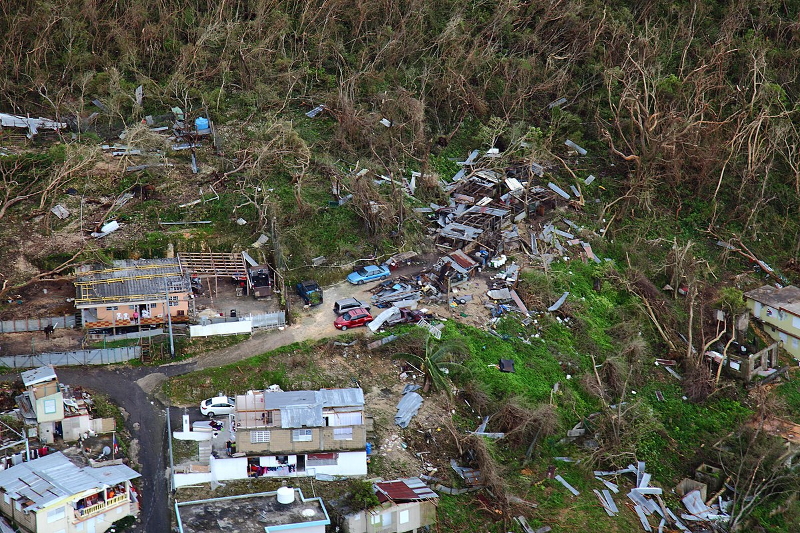
News reports tell of the devastation left by a direct hit from Category 4 Hurricane Maria. Puerto Ricans already coping with damage from Hurricane Irma, which grazed the island just days before, were slammed with an even stronger storm on September 20, bringing more than a foot of rain and maximum sustained winds of at least 140 miles per hour. There is still no electricity—and likely won’t be for weeks or months—in this U.S. territory of 3.4 million people, many of whom also lack running water. Phone and internet service is likewise gone. Nearly all of Puerto Rico’s greenery has been blown away, including trees and food crops. A major dam is leaking and threatening to give way, endangering the lives of tens of thousands. This is a huge unfolding tragedy. But it’s also an opportunity to learn lessons, and to rebuild very differently.
Climate change no doubt played a role in the disaster, as warmer water generally feeds stronger storms. This season has seen a greater number of powerful, land-falling storms than the past few years combined. Four were Category 4 or 5, and three of them made landfall in the U.S.—a unique event in modern records. Puerto Rico is also vulnerable to rising seas: since 2010, average sea levels have increased at a rate of about 1 centimeter (0.4 inches) per year. And the process is accelerating, leading to erosion that’s devastating coastal communities.
Even before the storms, Puerto Rico’s economy was in a tailspin. It depends largely on manufacturing and the service industry, notably tourism, but the prospects for both are dismal. The island’s population is shrinking as more and more people seek opportunities in the continental U.S.. Puerto Rico depends entirely on imported energy sources—including bunker oil for some of its electricity production, plus natural gas and coal.
…click on the above link to read the rest of the article…